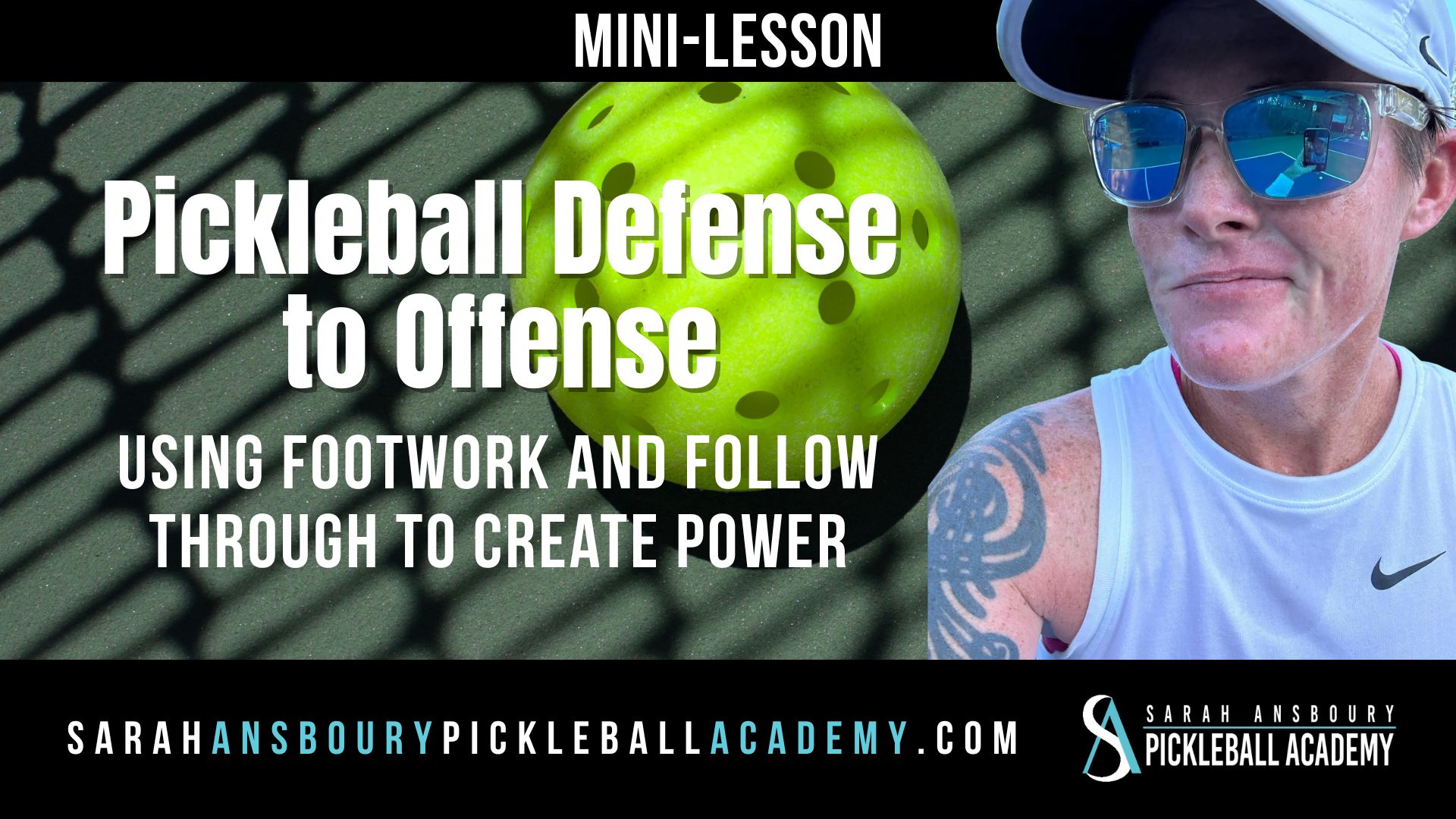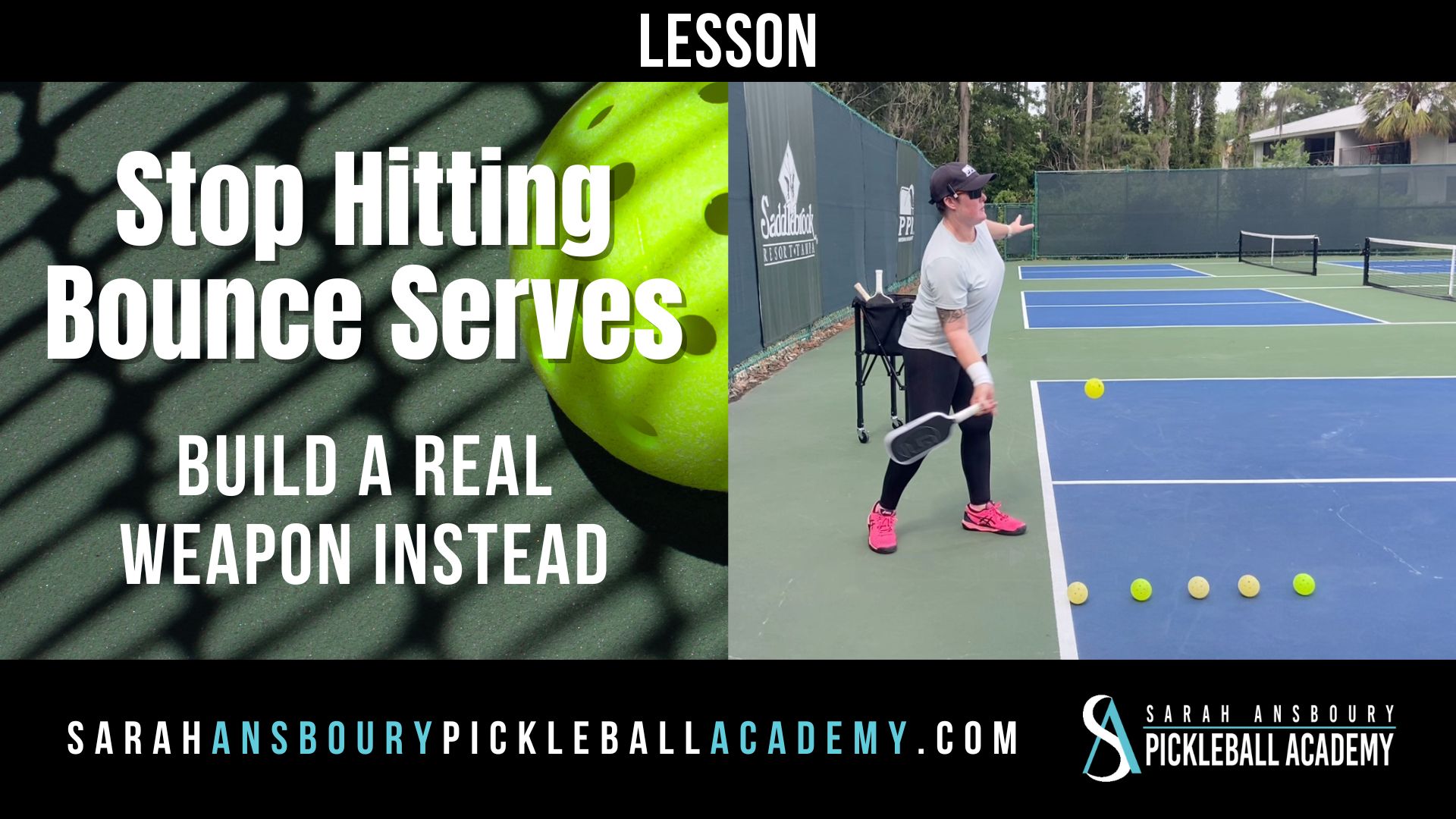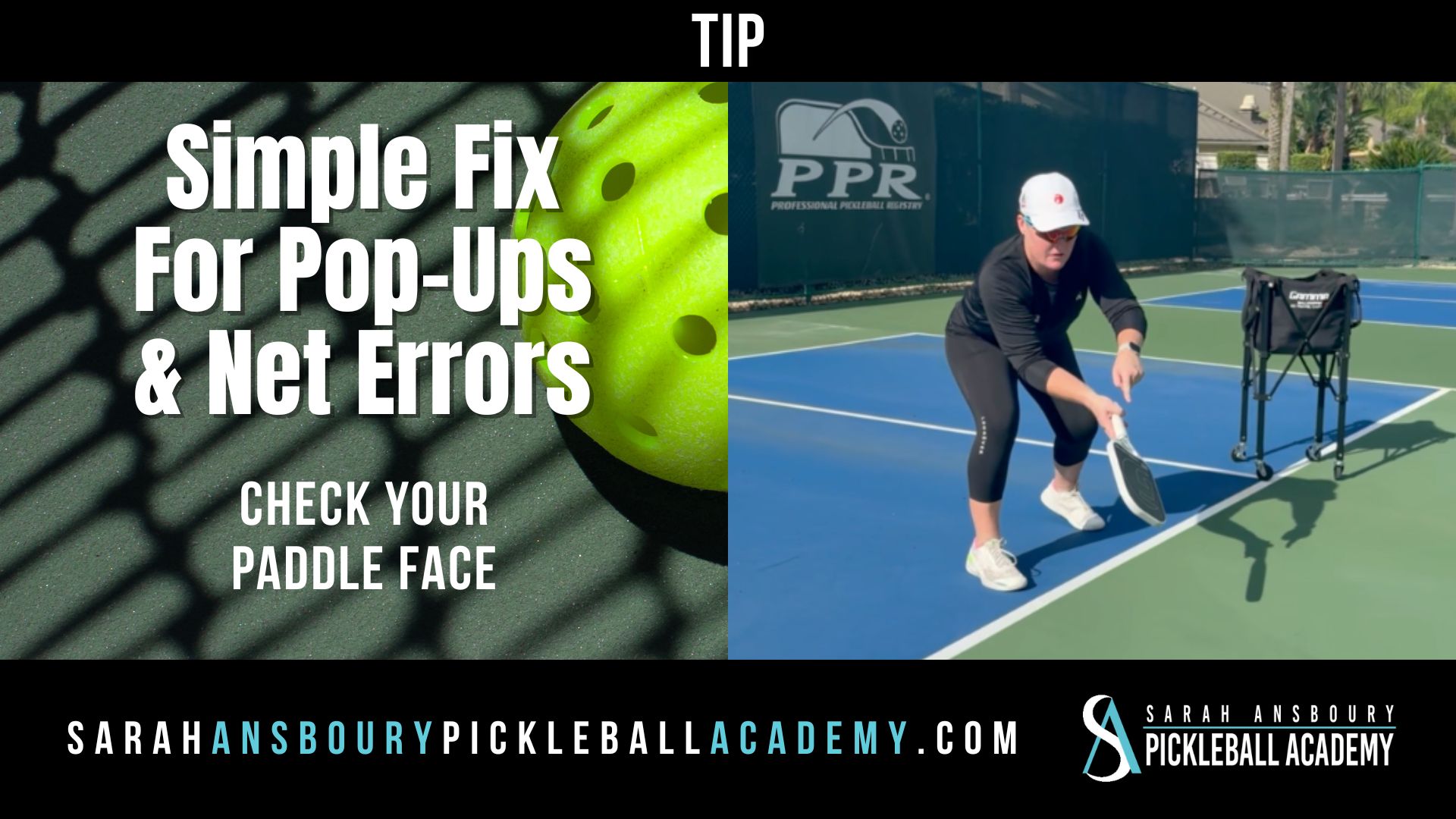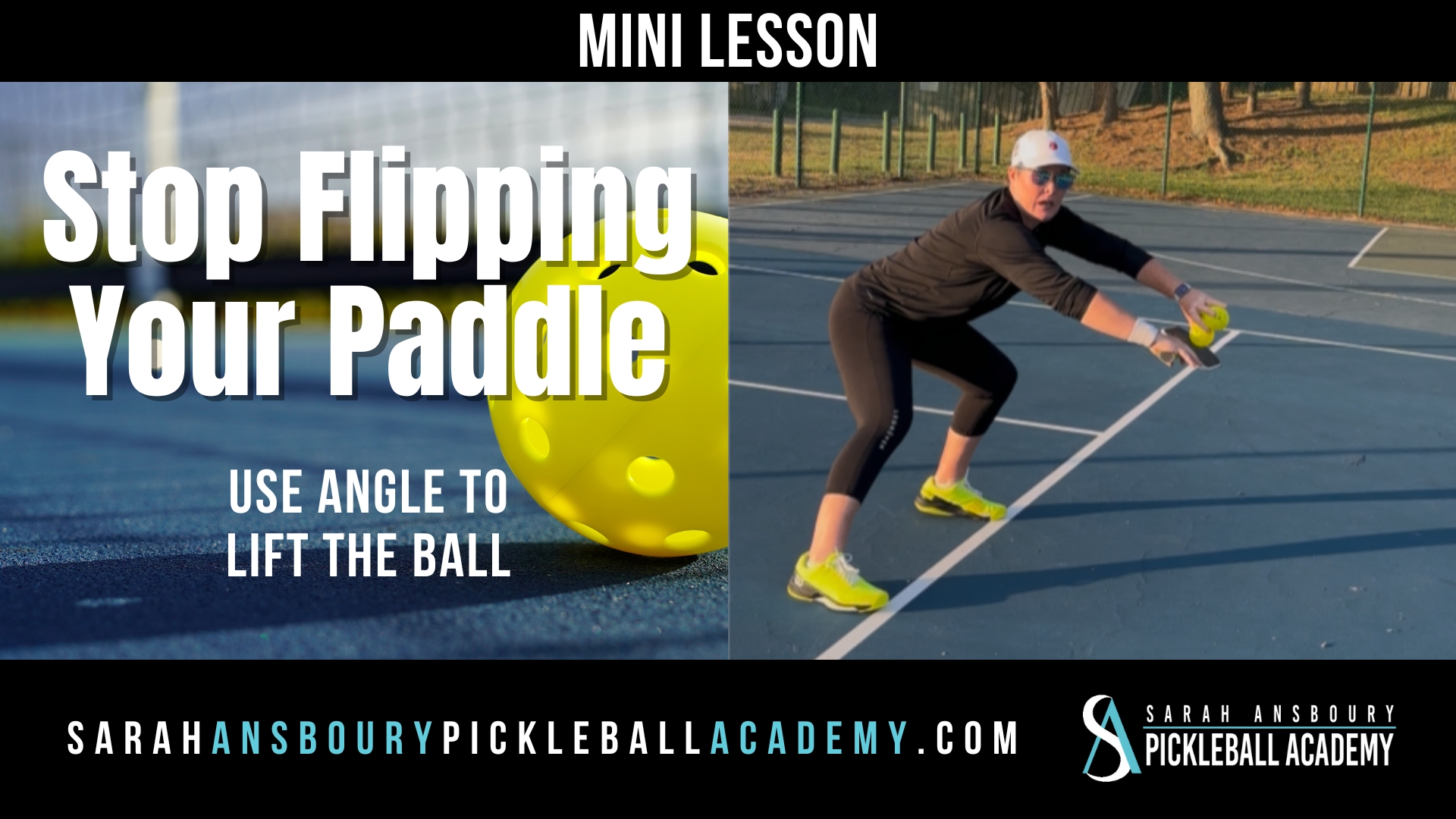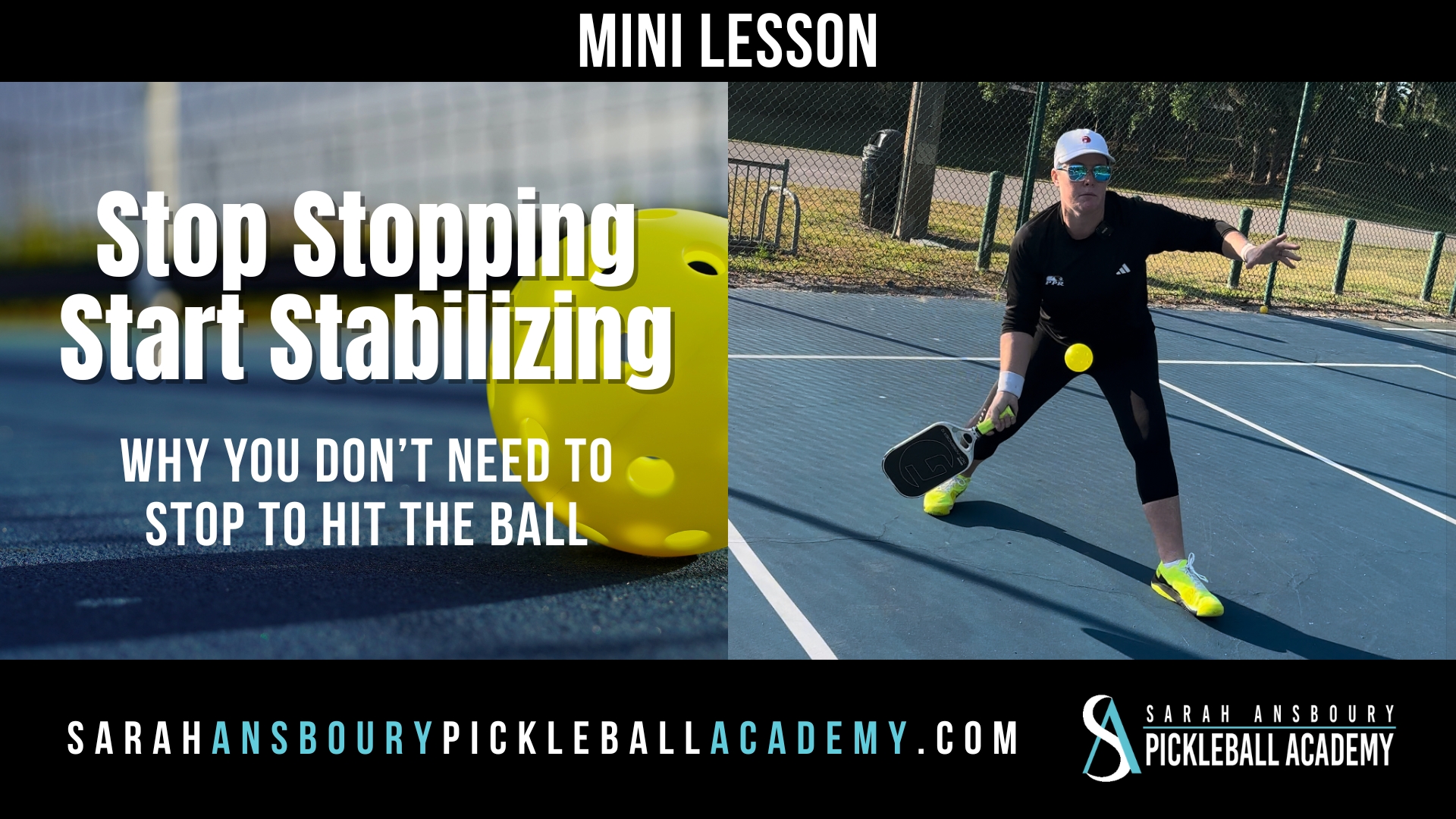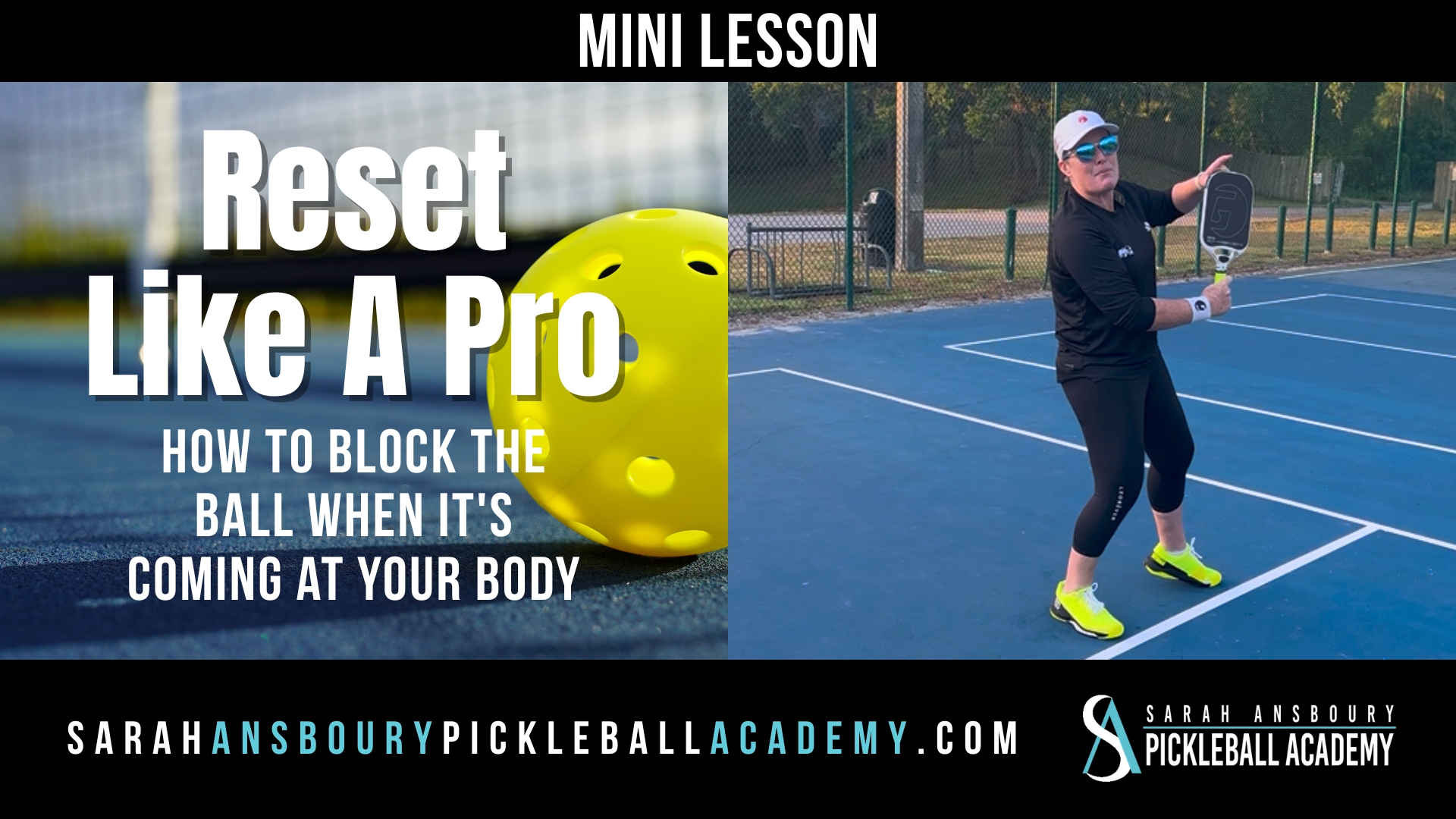When I am working with a new student, I often ask, “What are your pickleball strengths?” Sometimes I get a definitive answer. But most often, the student will list things they are good at or have no answer at all.

Know Your Pickleball Strengths
It is important to identify your greatest strengths on the pickleball court. Gigi LaMaster is patient and consistent, she can dink all day long. Christine McGraft has a powerful two-handed backhand. Personally, I love using my forehand.
Your pickleball strength could be a specific shot, but it doesn’t have to be. Perhaps you are a great game day strategist, i.e.you have the ability to quickly identify an opponent’s weakness and capitalize on it. It could be your mental attitude, and your ability to remain positive and committed despite the score. Everyone has strengths…I want to challenge you to take the time to identify yours.
If you are having difficulties finding something good to say about your game, ask someone you have played with or against. It really is important for you to take the time to identify your pickleball strengths.
Playing to Your Strengths
Identifying your pickleball strengths will help you in two ways:
- It can help you identify a good partner — Often times the best teams are those with complimentary skills. For example, an exceptional dinker can help set up their partner to put away that ball that goes just a little too high. The crowd may applaud the put away at the end, but the knowledgeable spectator knows that the many seemingly “routine dinks” was key to winning the point.
- Work to set yourself up — I personally love using my forehand. If you watch the way I approach the net, you will notice I try to find a way to get the ball to my forehand. I also try to set up the points so the ball is more likely to be returned to my forehand.
Focus on Your Strengths
 Sometimes, we become overly concerned about a shot our opponent might hit. We try to protect ourselves from that possibility, and loose focus on our own game. We put ourselves on defense, instead of focusing on the game we WANT to play and remaining offensive. We get afraid of what might happen, instead of focusing on what we want to happen.
Sometimes, we become overly concerned about a shot our opponent might hit. We try to protect ourselves from that possibility, and loose focus on our own game. We put ourselves on defense, instead of focusing on the game we WANT to play and remaining offensive. We get afraid of what might happen, instead of focusing on what we want to happen.
During a game, we want to be focused on the game we want to play:
- We want a slower game….keep dinking;
- We want to isolate that player…keep returning to him;
- We do best when we capture the net…keep our returns of serve deep.
 Changing your mindset to what you want can also help you feel much more comfortable and confident on the court. But it does take practice and work. Being aware of your pickleball strengths is your first step on the road to pickleball mastery.
Changing your mindset to what you want can also help you feel much more comfortable and confident on the court. But it does take practice and work. Being aware of your pickleball strengths is your first step on the road to pickleball mastery.

